Strobed Data Storage
Common Use Cases
Store single values or short segments of data (including pre-trigger data). Includes heat maps and bar plots. Use this gizmo to store streaming data asynchronously or store values/ segments of data around events of interest.
Gizmo Help Slides
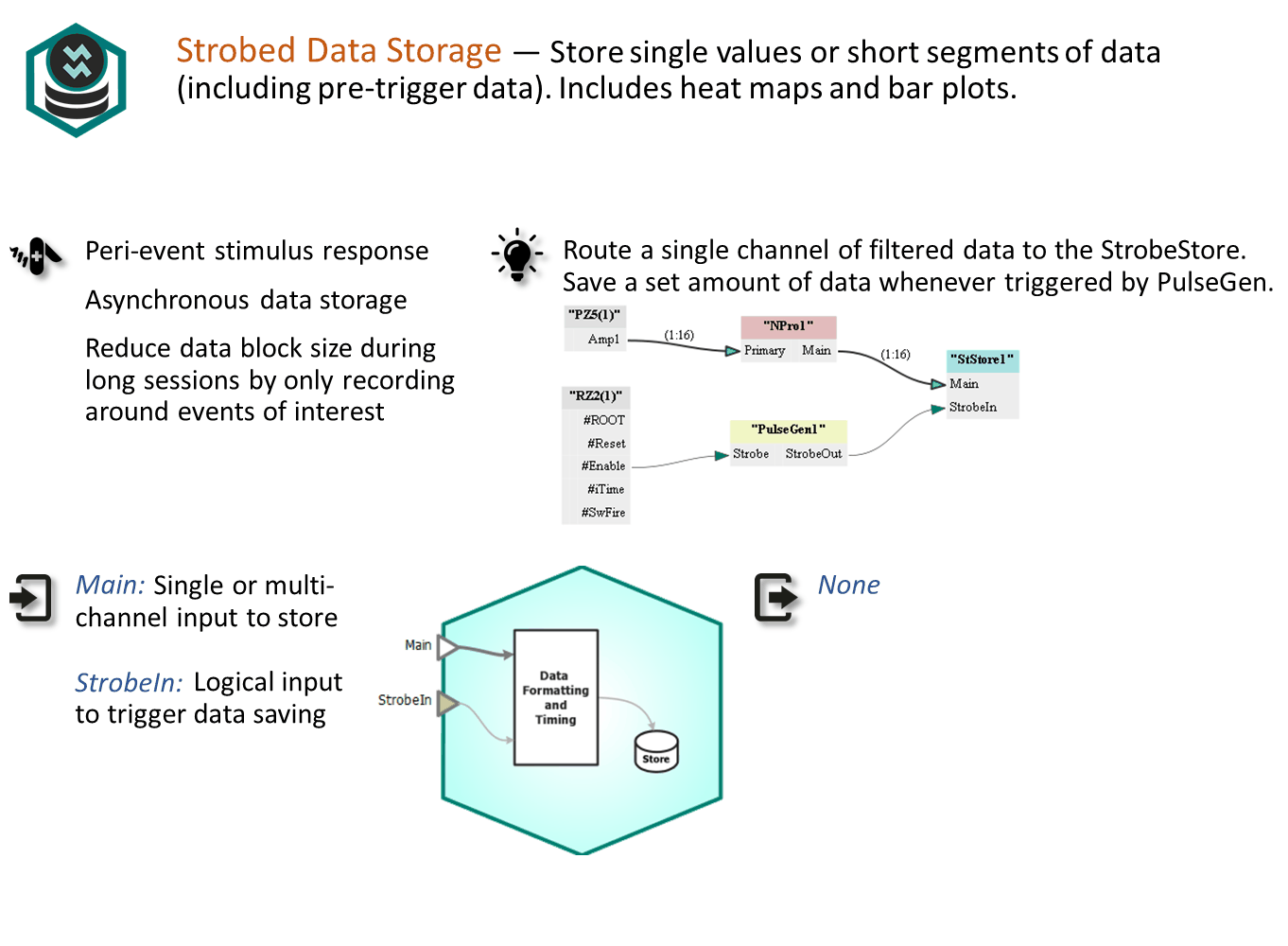
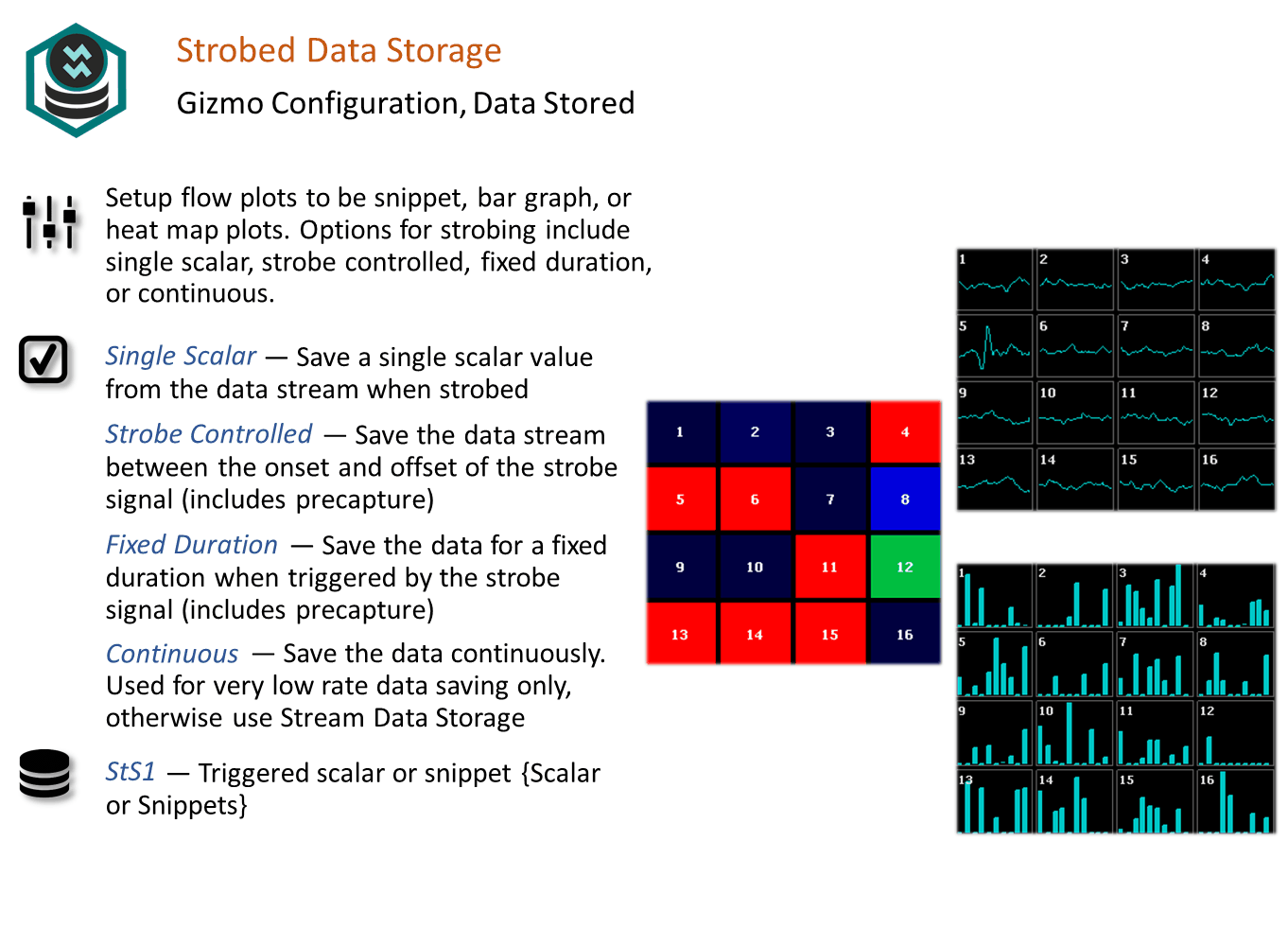
Reference
The Strobed Data Storage gizmo stores timestamps and associated event values when triggered. This can be a single value or a short segment of values stored at a specific sampling rate. This gizmo includes advanced runtime visualizations.
The Runtime Interface
A strobe plot can be added to the Flow Plot for visualization. See Flow Plot for more information on using and customizing the plot.
Additional visualizations are available depending on the Capture Mode. See Runtime Visualization for more information on using and customizing these plots.
Strobed Storage Configuration Options
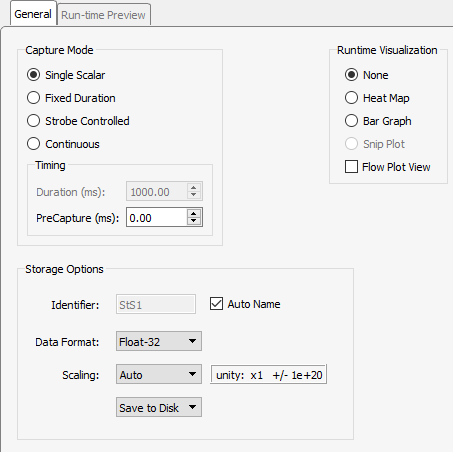 |
| Strobed Storage Configuration Options |
Capture Mode
The Timing and Storage Options have different meaning depending on which capture mode is selected.
-
Single Scalar stores a single data point on the rising edge of the Strobe input. If you want to record the value at some fixed time before the trigger occurs, set PreCapture (ms). The timestamp stored in the data tank will also be delayed by this amount.
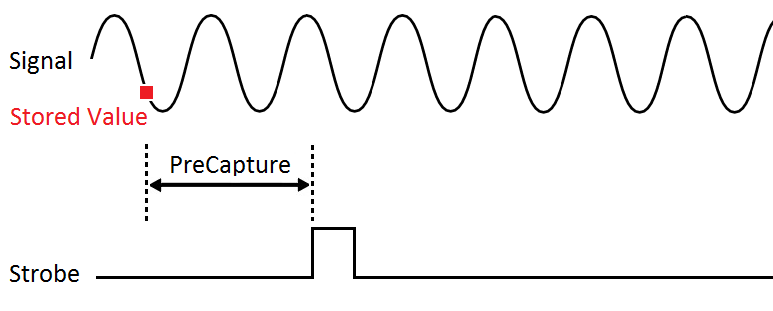
Single Scalar Timing Diagram -
Fixed Duration stores a fixed number of points on the rising edge of the Strobe input. Set the desired sampling rate of the acquired data. The format of the data stored into the tank is optimized automatically for you depending on the sampling rate.
-
If the rate is below 10 Hz, each stored data point will have a timestamp and value (it will be stored as timestamped scalar values).
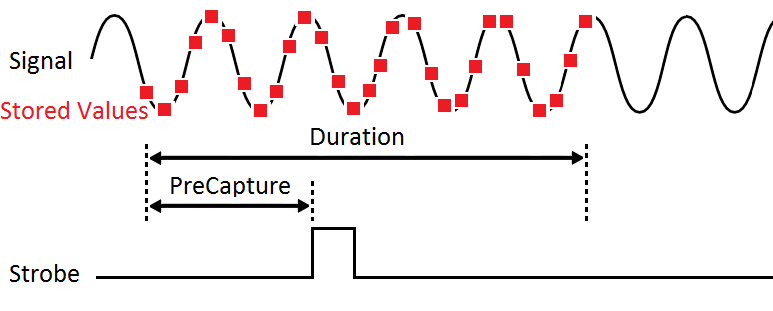
Fixed Duration Scalar Timing Diagram -
If the rate is 10 Hz or above, the data is recorded in short blocks (Record Type Block) that include a single timestamp and chunk of points, determined by the Block Size setting.
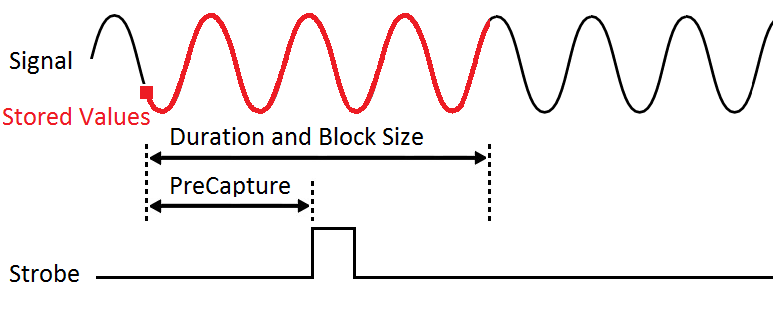
Fixed Duration Block Timing Diagram
If the duration is longer than the optimized maximum block size, the recordings are broken up into smaller blocks, determined by the Blocks per Capture setting. The diagram below shows two sub-blocks.
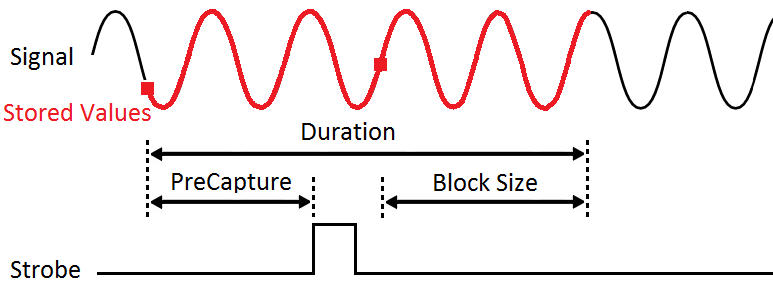
Fixed Duration Sub-Block Timing Diagram All of the automated settings in the Storage Details options are designed to optimize data transfer from the hardware back to the PC. You can override these defaults by checking the Storage Details box, though this is not typically recommended.
-
-
Strobe Controlled stores values only when the Strobe input is high. The sampling rate determines the record type (Scalar or Block).
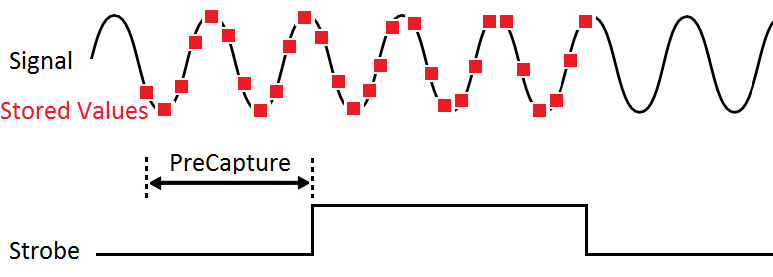
Strobe Controlled Scalar Timing Diagram 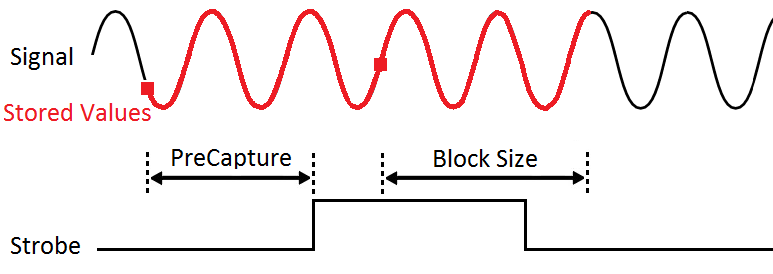
Strobe Controlled Block Timing Diagram When the record type is Block, the last recorded sample will typically be beyond the end of the strobe because the Block Size is always fixed while the Strobe input duration can be variable.
-
Continuous mode ignores the Strobe input and data is continuously recorded into the tank at the specified sampling rate.
Important
For high sampling rates of continuous data above 30 Hz, the Stream Data Storage gizmo is recommended instead.
Runtime Visualization
Choose what type of plot(s) to see at run time.
-
Heat Map
For Single Scalar values, display a grid with value mapped to color intensity.

Heat Map -
Bar Graph
For Single Scalar values, display a bar graph of the previous N values.
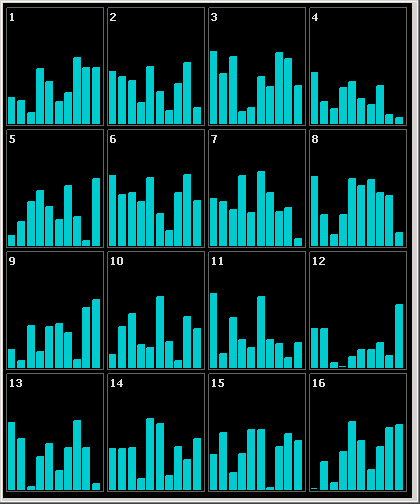
Bar Graph -
Snip Plot
For Fixed Duration storage, plot the previous N waveforms and highlight the current waveform.
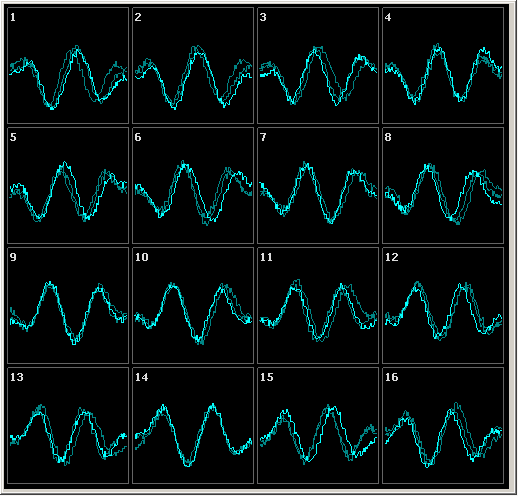
Snip Plot
Flow Plot View
Select this to also show the corresponding data store in the Flow Plot window (recommended).